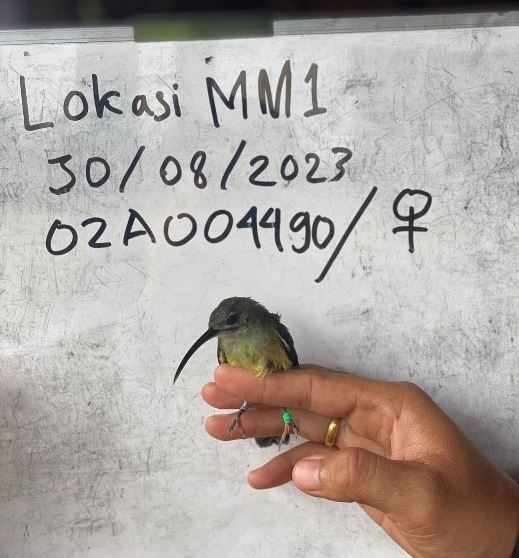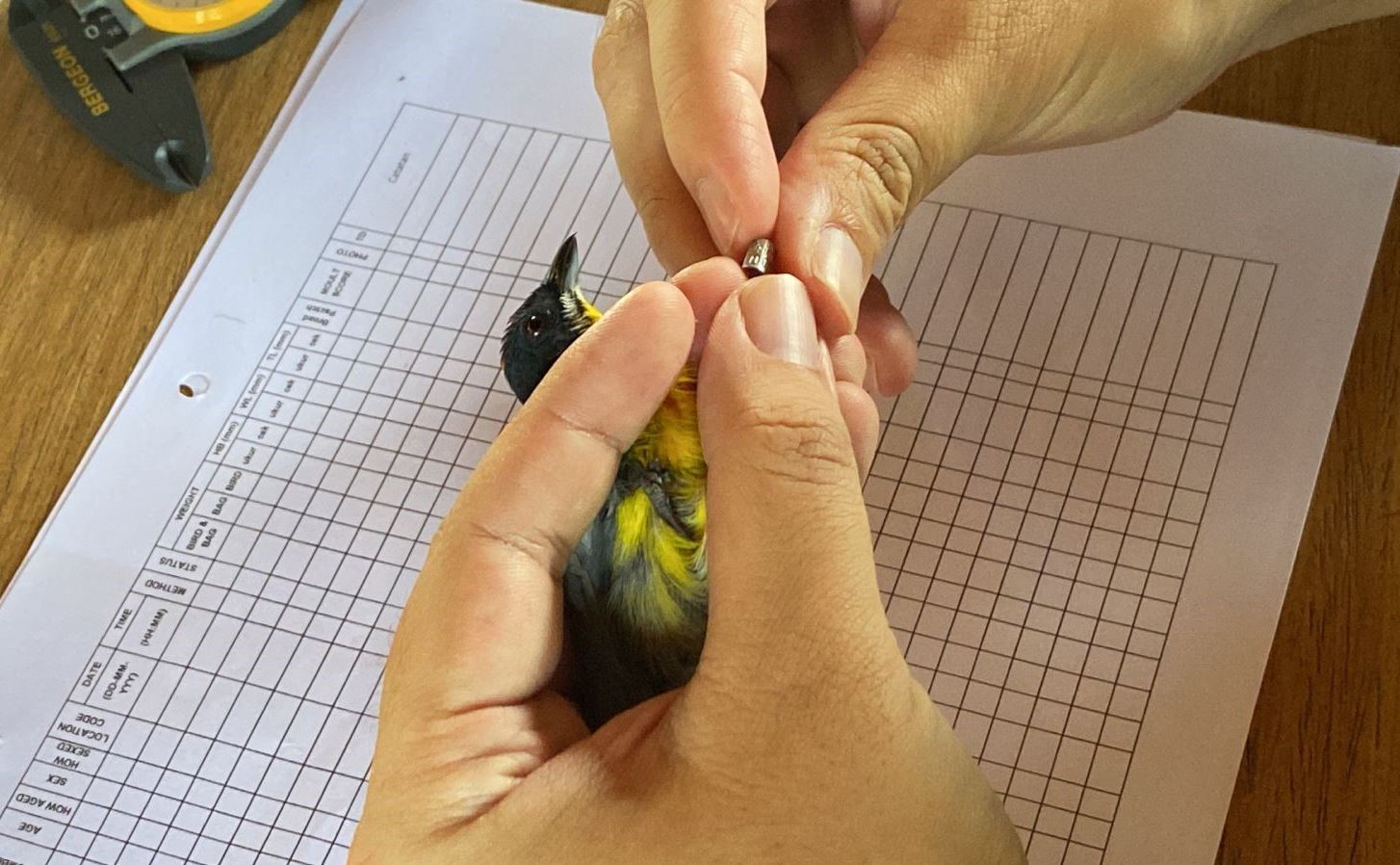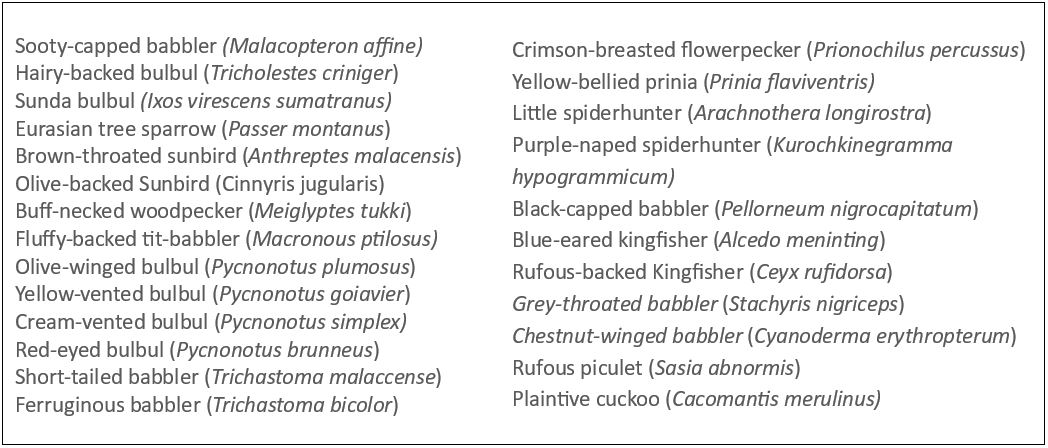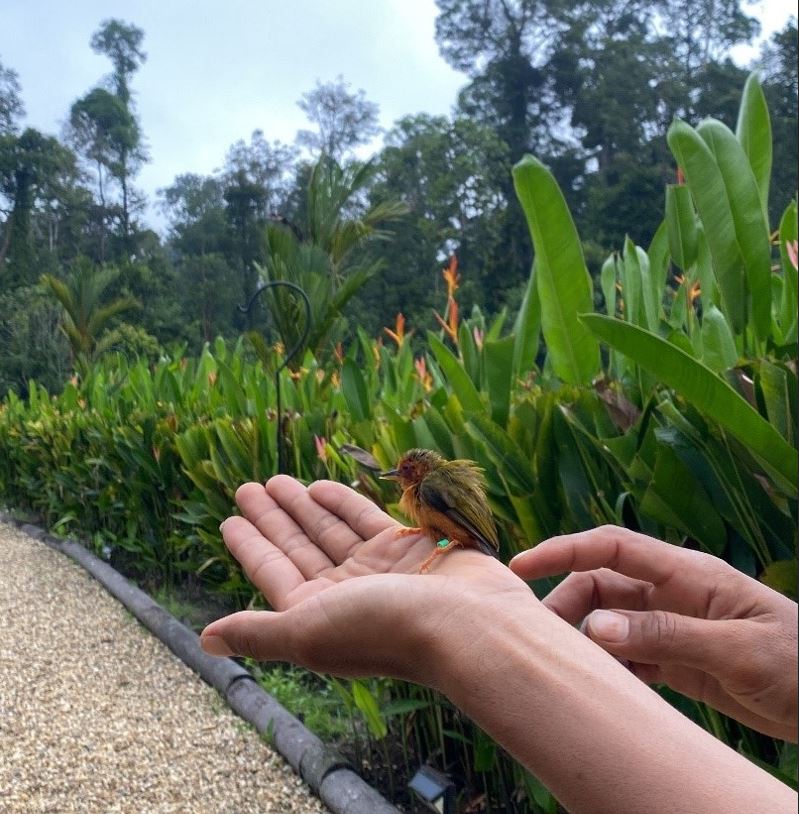October 06, 2023
Restorasi Ekosistem Riau (RER) provides a vital refuge for Indonesia’s bird species. To date, 318 species have been documented here, including 22 featured on the IUCN Red List and a further 78 protected by the Government of Indonesia. This biodiversity makes RER a hub for research and conservation efforts, which are currently focused on an ongoing process of bird banding.
But what exactly is bird banding? How does it work? And what ecological benefits are offered by this process? To answer these questions, we’ll look closely at the banding operations currently underway in RER, with particular focus on project objectives, methodology, and results.
Let’s begin by looking at the problems facing Indonesia’s birds, to see why conservation action is so urgently needed.
Deafening silence: Decades of decline in songbird populations
The Kampar peninsula is home to a great variety of rare and highly threatened bird species. Due to its remarkable bird diversity, and as a site of international biodiversity conservation importance, it was designated an Important Bird Area (IBA) by the BirdLife International in 2003.
Elsewhere in Indonesia, birds are under serious threat from the illegal wildlife trade, with populations of songbirds in decline due to their popularity as pets, and as contestants in songbird competitions run by collectors. As a result of this trade, in which animals are taken from the wild unsustainably, breeds that were once common are now threatened by extinction.

Despite the perilous state of Indonesia’s songbirds, population monitoring programs are almost as rare as the birds themselves. Bird banding (sometimes referred to as ‘ringing’) provides a simple and effective way to register individual animals, while also building up a picture of population numbers, trends, and movement.
Five key benefits of bird banding:
1) Population monitoring
Through banding and recapturing individual birds, researchers can estimate whether numbers are growing or shrinking over time, giving valuable insights into future survival, since more young birds or birds incubating eggs represent a healthy population. It also helps identify ‘cryptic species’ – those that look very similar and can be hard to tell apart at a distance
2) Migration studies
By tracking banded birds’ movements, we can identify important migratory pathways, wintering and breeding grounds, and areas that are integral to the survival of migratory species.
3) Behavioral research
Banding related data provides insights into breeding patterns, nesting habits, feeding preferences, homerange and social interactions. This information helps researchers understand the ecological roles of different bird species.
4) Policy and conservation planning
Conservation organizations and government agencies use data from bird banding projects to identify critical habitats, establish protected areas, and develop effective management strategies for bird species at risk.
5) Public awareness and education
Bird banding can help to educate the public about the importance of bird conservation and appreciate birds, since participants are able to observe bird species from up close. these programs are a crucial first step in conservation by raising appreciation for wildlife and conservation awareness.
Bird banding in RER
RER recently organized an intensive bird banding training session for its staff with the help of licensed bird banders from Yayasan EKSAI and under the guidelines of the official Indonesian Bird Banding Scheme (IBBS). The main objective was to gather much-needed data on heavily trafficked songbirds, while also providing RER staff with the equipment and necessary skill they would need to potentially conduct long term monitoring.
Data collected from these activities will help illustrate the impacts of the illegal wildlife trade on bird populations on the Kampar Peninsula. In addition, by banding birds and recapturing them at intervals over time, we can track population density and ecosystem health, while also investigating the impacts of poaching and the illegal wildlife trade . The training is ongoing, with three more sessions scheduled before the end of this year The next sessions will coincide with the northern hemisphere’s migratory season, meaning that migratory species may be caught.
How does it work?
Our first priority is to capture the animals safely, without causing them any harm. To achieve this, we set up mist nets (8-18m in length) in areas that are expected to have high bird traffic.

Once captured, the birds are banded with color-coded and numbered rings. These identifying markers correspond to the data we collect for each individual, which includes :
– Species
– Size
– Weight
– Sex
– Estimated life stage (immature, adult)
– Tarsus Diameter
– Wing Length
– Body Length
– Brood Patch (Presence/Absence)
– Fault Bar (Presence/Absence)
– Molt Score (feather condition)
To minimize the stress this process causes the birds, we avoid peak temperatures during the middle of the day, and only capture and band them in the early hours of the morning or in the late afternoon. We also check the nets at regular intervals, to ensure the process moves quickly and to protect the birds from damage, exhaustion, and predation.
During the latest round of RER bird banding, we captured 57 individual animals over a period of 12 days. The results of this relatively small sample size reveal the stunning biodiversity RER has to offer – a haul that included babblers, bulbuls, kingfishers and cuckoos. Below is a list of all the species captured, recorded, and released:


Capture to conserve: Bird banding as a powerful conservation tool
Banding has a vital role to play in bird conservation. The scientific data and insights provided by this process illustrates fluctuations in bird populations, along with their movements, habitat use, behavior, and general health. This information can also provide the basis for policy, regulations, and interventions designed to protect birds and their habitats.
Working together with the EKSAI Foundation and as a part of the nationwide IBBS program, RER is committed to conserving Indonesia’s remaining wild bird populations, and helping many of them bounce back from the brink of extinction. Results from these studies have the power to change public attitudes, inform government policy, and expand our understanding of bird behavior.
Ultimately, bird banding is a major step towards tracking and conserving remaining populations of birds living wild in Indonesia while connecting with the global scientific community; to give these animals a better chance of survival, and to ensure the forests of the future continue to resonate with their song.